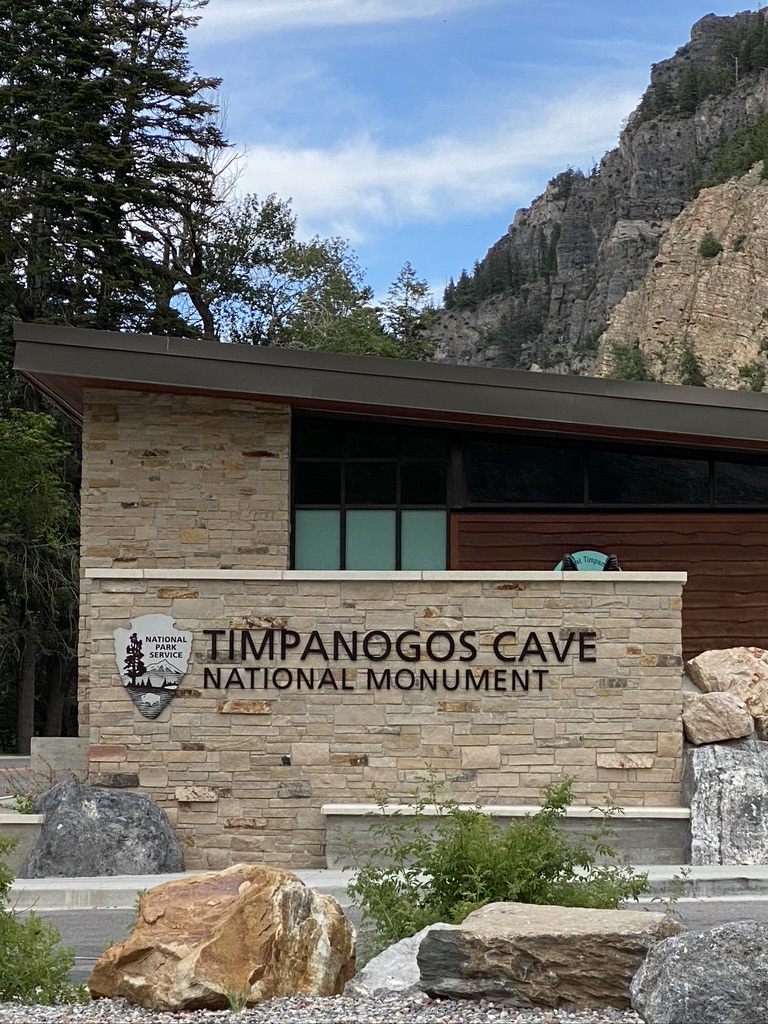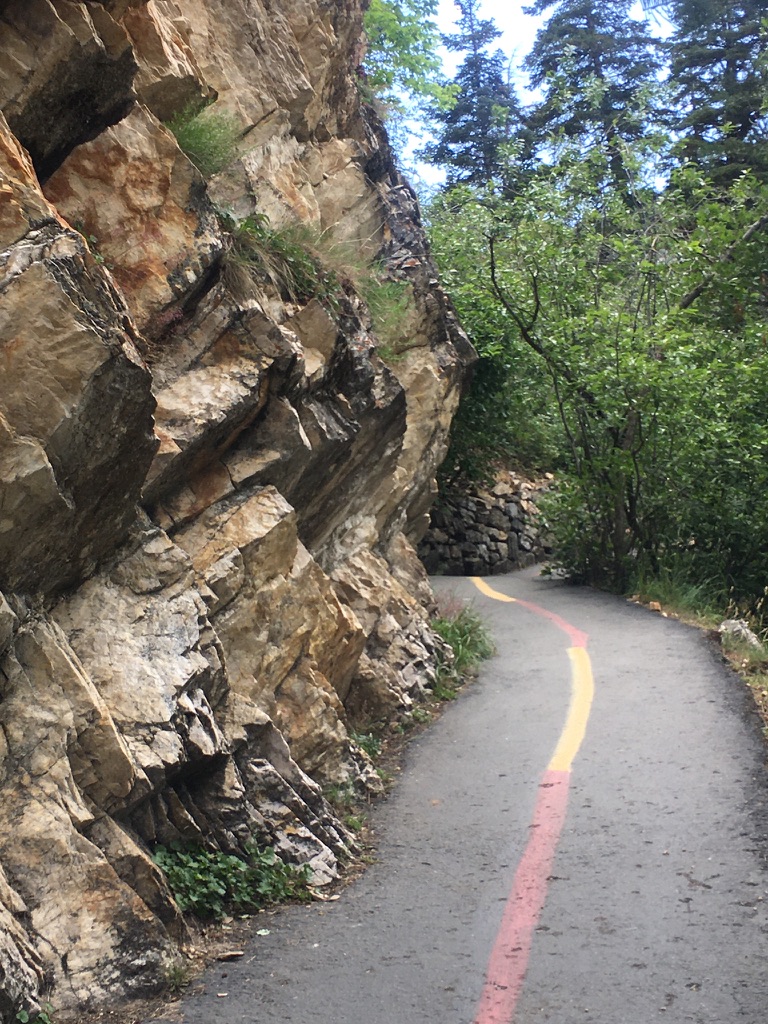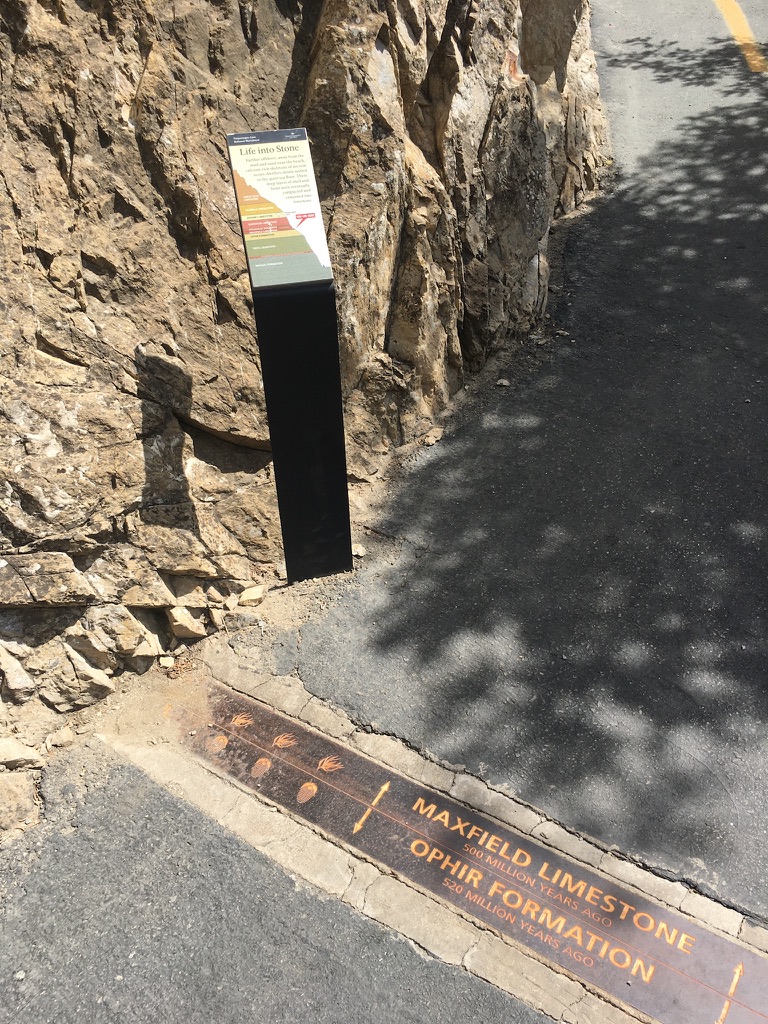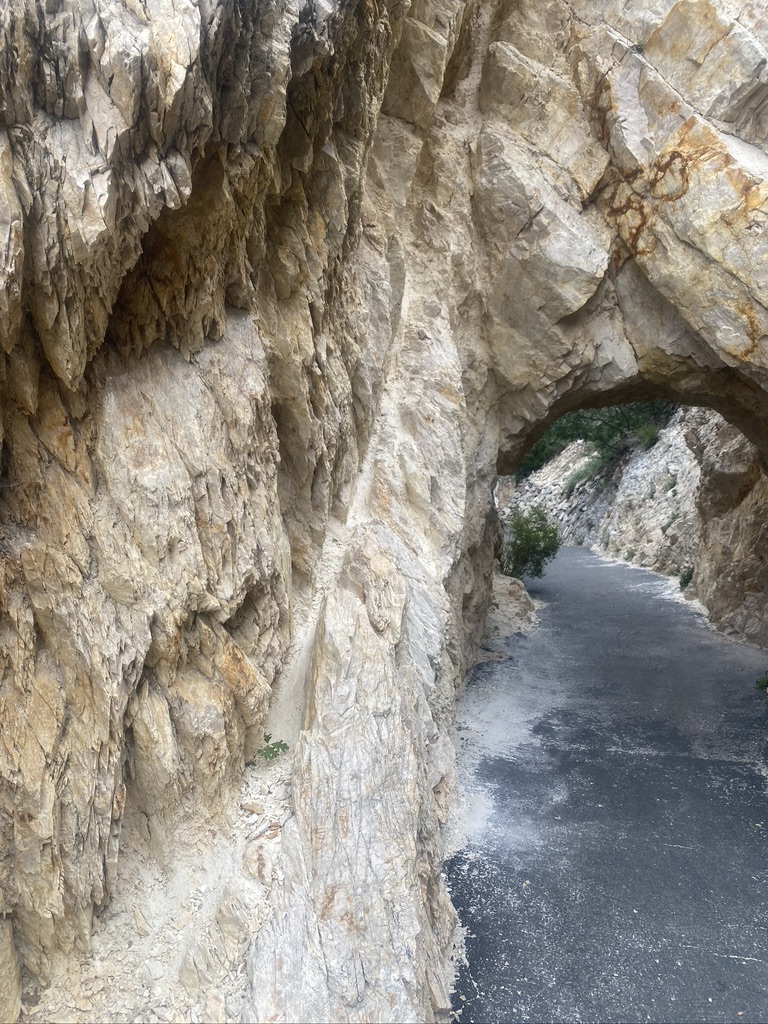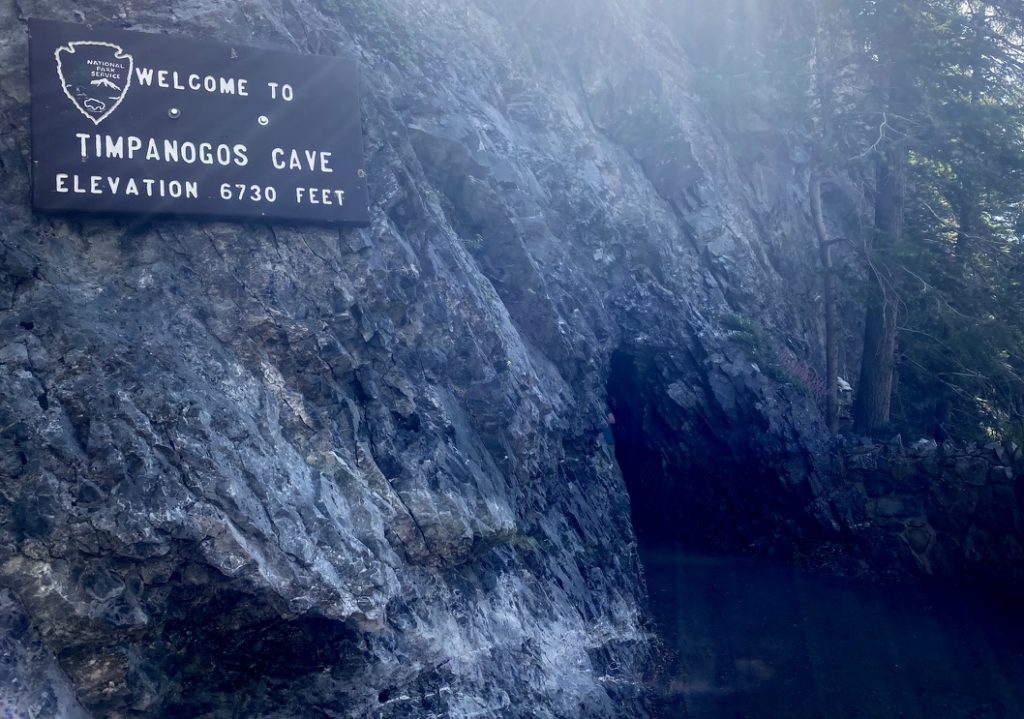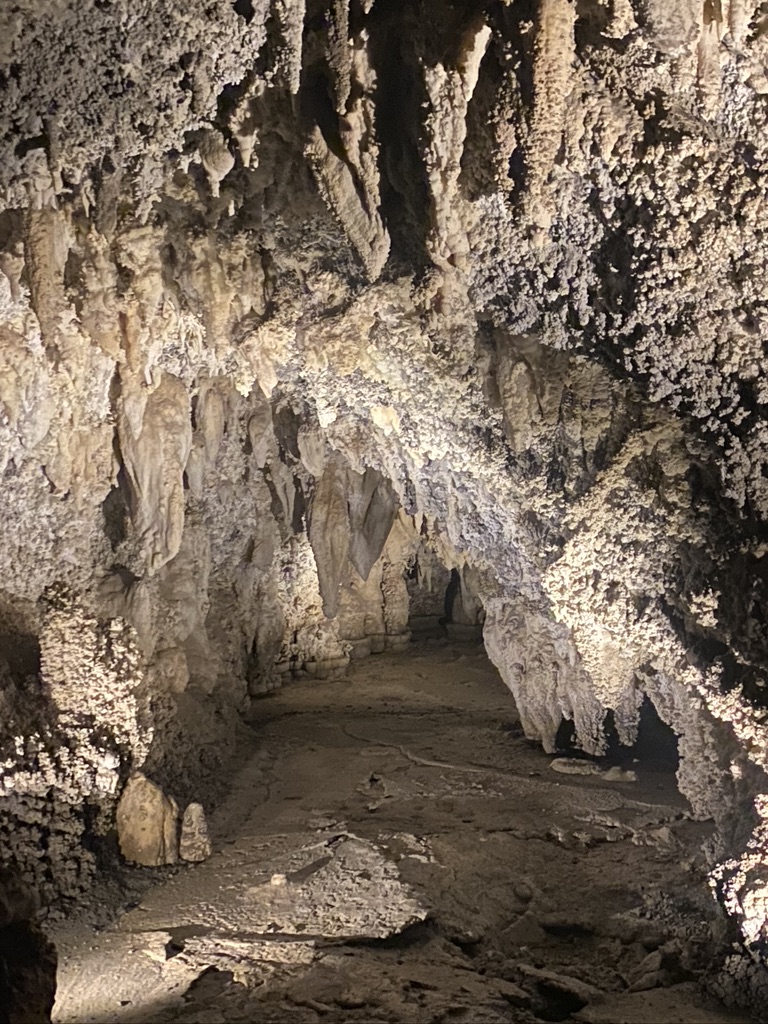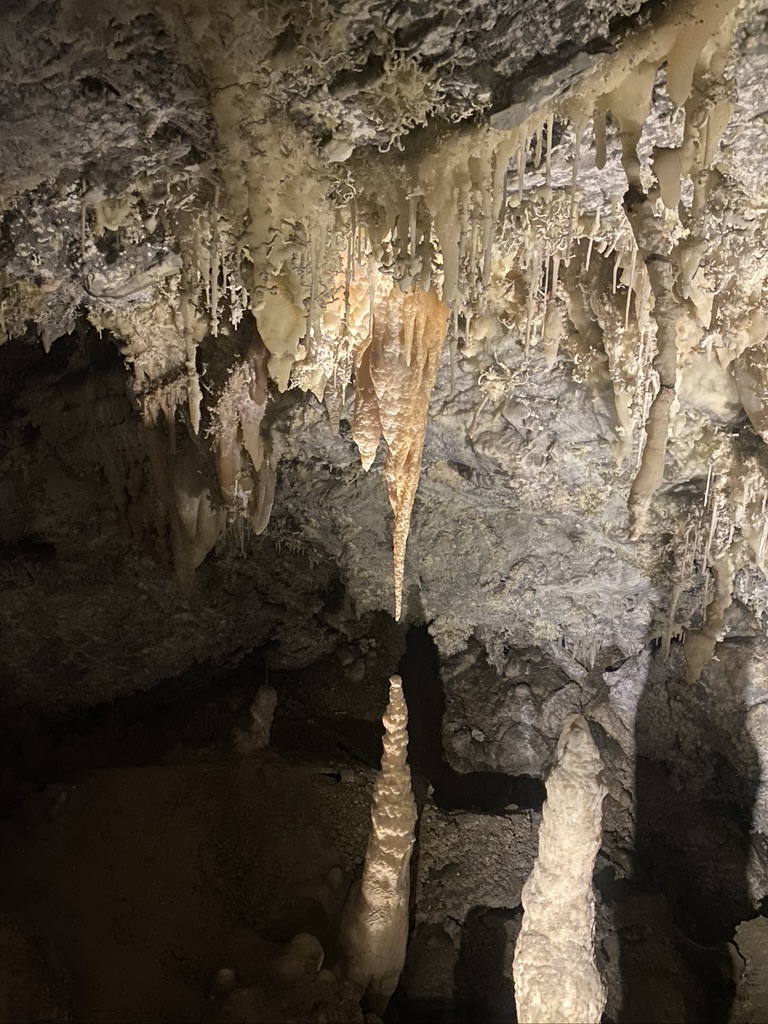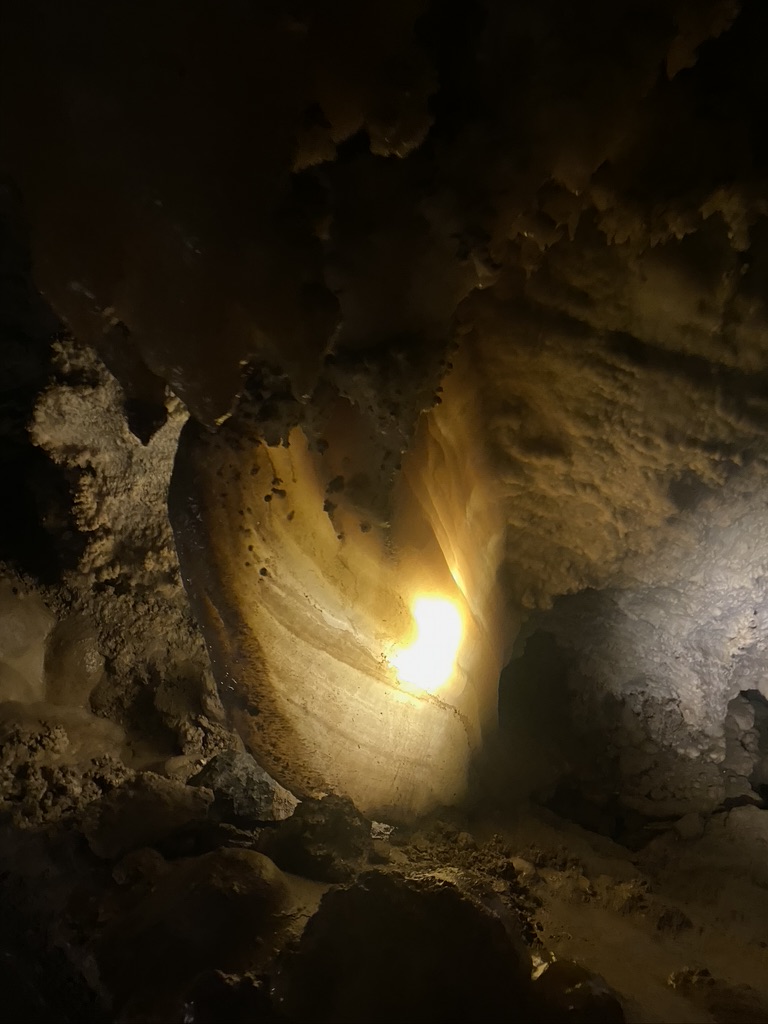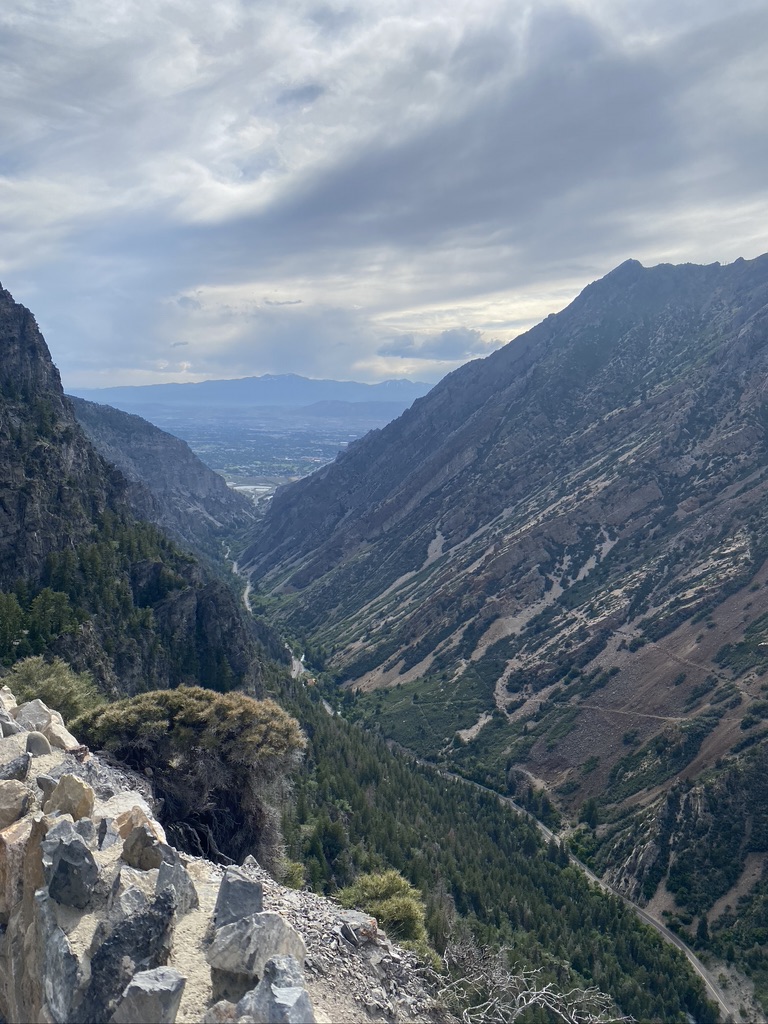Want to get your steps in, enjoy a solid aerobic workout, and also enjoy an amazing view? Are you a geology nerd? Do you want the opportunity to—possibly—see bats? If you answered yes to any of these, then the Timpanogos Cave National Monument is the place for you. Located on Mount Timpanogos, the caves are accessible by driving the Alpine Loop in central Utah (which is beautiful in its own right). The monument is operated by the National Park Service and consists of a series of three caves. Originally, they were separate and distinct caves, but over the years they have been connected through manual efforts.
Did I say the caves were accessible by way of the Alpine Loop? Oops. To clarify, the Alpine Loop gets you to the visitor’s center at the base of the mountain. To access the caves, you must hike a stunning but rigorous 1.5-mile trail.
Let’s talk about that trail. It is paved and wide enough for two-way traffic, but it ascends 1096 feet between the visitor’s center and the entrance to the tour. It starts with a series of switchbacks and then traverses the mountain face before doubling back again to arrive at the mouth of the cave. Some portions of the trail are particularly steep and there is consistently a sharp drop-off on your right side. The trail is periodically marked with an alternating red-and-yellow center line, indicating areas subject to potential rockfall, and we were advised to pass through those without stopping. This is harder than it seems because we halted frequently to capture the moment in pictures and, just occasionally, to catch our breath! There are frequent benches along the trail, if you need more than a brief pause to let that heart rate settle….
Even without the caves, the trail is a great hike. The lower third starts in a wooded area but then transitions to more exposed slopes with only periodic shade. The entire route passes through a series of colorful mountain wildflowers and potential wildlife (we didn’t see much beyond birds and some squirrels; however, the guides say there are sometimes mountain goats). For the geologists among us, the trail passes through nine distinctly-marked rock zones and it doesn’t get easier than this to see the different rock layers and marvel that these convoluted layers once represented flat earth. The most amazing thing was an actual visible fault line indicated by the line of dust where the opposing plates grind the rock to powder (see photo below). The whole thing is like an outdoor geology class with helpful signage along the path!
I said that the trail was a great hike, even without the caves, but don’t forget the caves are the ultimate destination. By the time you reach the top of the trail, you are ready to move into the shade and await your tour slot. The only way you can enter the caves is by participating in the tours and this requires purchasing a ticket before you start your ascent. Don’t be the people that arrive at this point high above the visitor’s center without one (I only say this because, according to the rangers, it does happen)!
The monument is made up of three caves; Hansen Cave, Middle Cave and Timpanogos Cave.
Martin Hansen discovered the first cave, later known as Hansen Cave, in 1887. The story is that, while cutting lumber, he saw cougar prints and followed them (why would someone do this?) to the cave opening. The entrance to Timpanogos Cave was discovered in 1913 by James Gough and Frank Johnson, but was soon lost. Some say it was due to a landslide that covered the opening, while others say it was because the entrance was kept secret. Eight years later, Vearl Manwill went in search of the lost cave and rediscovered it in February 1921 while leading a group that would be known as the Payson Alpine Club. In October of 1921 George Heber Hansen and Wayne Hansen (Martin’s son and grandson) discovered an entrance to a cave in-between Hansen and Timpanogos caves, which is known as Middle Cave. The three caves were connected by manmade tunnels in the 1930s. Thankfully, early efforts to profit from the caves through both mining and tourism failed. (It was way too hard without the current path!) The caves were designated as a national monument in 1982.
Tours begin at a manmade entrance near the original cave entrance found by Martin Hansen and continue through the three caves and their connecting tunnels, all while the ranger guide provides a useful narrative with both history and geology. The route is about 1000 feet, following a concrete path with steps and railings. Be aware that the path does require you to periodically bend, twist and crouch to avoid touching and damaging the roof or walls.
Highlights in the caves include cave bacon, cave columns, cave popcorn, flowstone, cave drapery, stalactites and stalagmites and helicites, which are hollowed, spiraling, twisted straws of aragonite and calcite. Of note is a formation known as The Great Heart of Timpanogos (photo below). One amazing note was that by shining light on the features, their underlying mineral content would be highlighted by their subtle color changes.
Once you complete the tour, you find yourself on the outside, blinking in the bright sun. Doff any light jacket you may have donned, and prepare for that knee-stressing descent by…going back uphill again. What? Yes, the first couple hundred feet take you back uphill and back around a curve where you have the opportunity to take an artsy photo of someone from your group in silhouette. Then you meet back up with the main trail and follow it down. Heading back down is much faster, though I must warn you that it is a bit hard on older knees.
The Details
Again, the only way to explore the caves is through a guided tour, so be sure to get your tickets at the visitors center before your hike. You are also signing up for a specific time slot, which may not be immediate. Wear sensible shoes for hiking and take along at least one full water bottle per person. There are good restrooms at the visitors center but once you’ve climbed the hill there is only an austere outhouse—although one with a particularly good view! There is no place to refill your water supply, though you will need less on the descent. The temperature inside the cave stays at about 46 degrees Fahrenheit. It may sound a bit chilly, but I assure you it is a welcome temperature after the steep hike. My husband put on a light jacket and felt perfect, while I was fine in my short-sleeved shirt. Once inside the caves you will maneuver a series of staircases. If you have mobility issues or are in poor health, this may not be the hike for you. Neither wheelchairs nor strollers are allowed on the hiking path. Tours to choose from are the basic underground tour, where the park ranger will tell you about the history and geology of the caves, or you can take the Introduction to Caving Tour, where you will at one point go down a rope as you follow the historic cave path. Caves are closed during the winter. Tours often sell out so do yourself a favor and schedule one online.
The park rangers recommend 1.5 hours to make the hike up the mountain but are more than willing to let you begin early if you feel you will need a bit more time. This is a National Park so don’t forget your National Park Pass (needed for entrance and parking), if you have one. If not, you can purchase one at the visitor’s center. Activity duty military and veterans are eligible for free National Park passes, so if you qualify but don’t yet have one, take proof of your status and the Park Ranger in the visitor’s center will hook you up, although you will still need to pay for your cave tour. If you’re like us and enjoy adding stamps to your Park Passport, you’ll be able to add one to your book at the visitor’s center. If you don’t have one, they have them for sale there, or you can order one here. Another popular option is to buy a scratch-off map to record your park visits (the benefit to the map option is that you don’t have to remember to take it along with you to the parks.).
Whether you are on a quest to visit all the National Parks or are looking for a day hike, lace up your hiking shoes and head over to the Timpanogos Cave National Monument, you’re sure to have an adventure!

